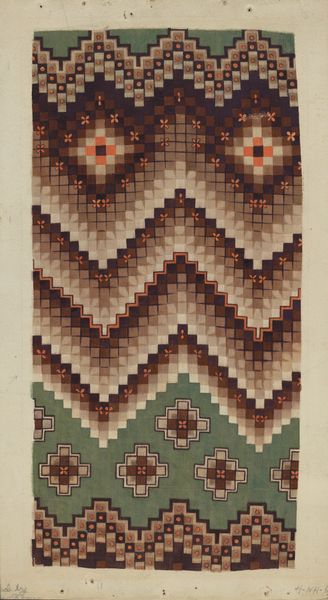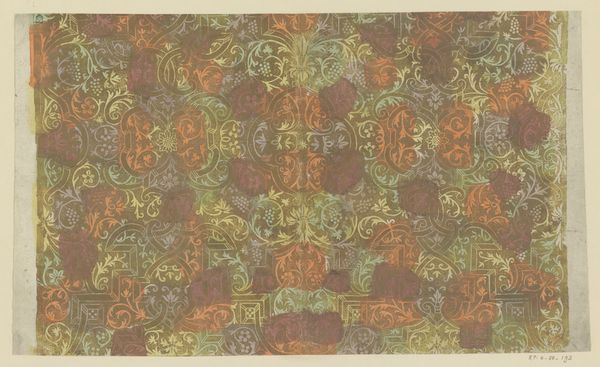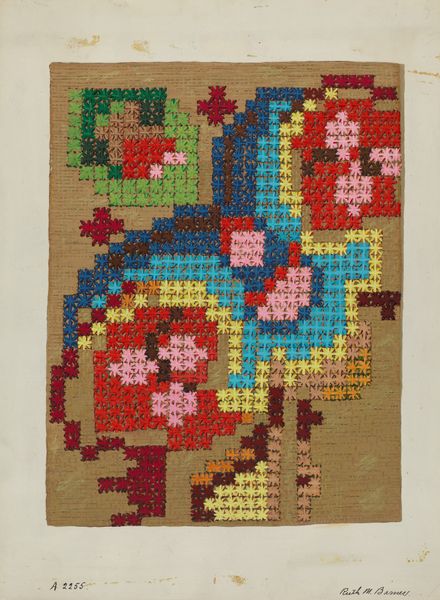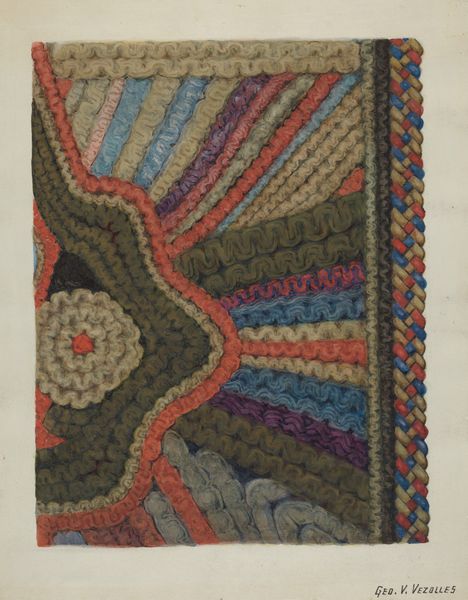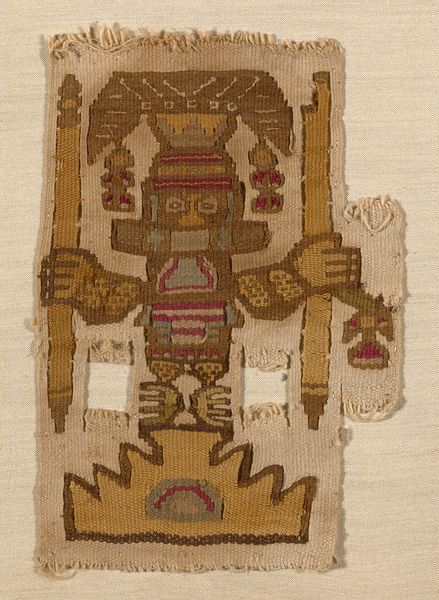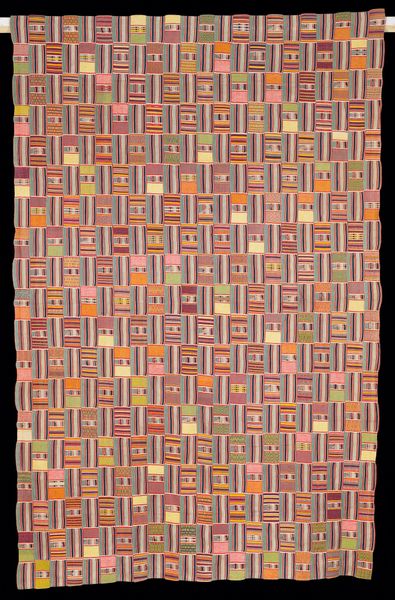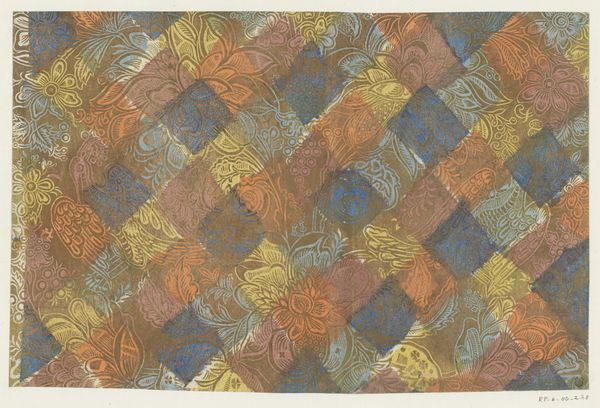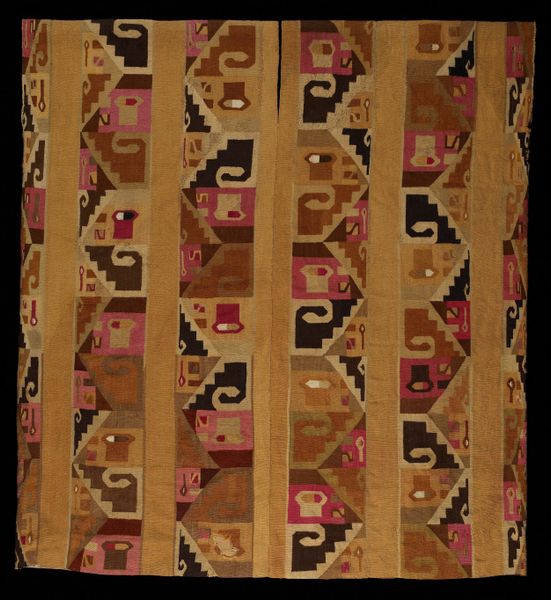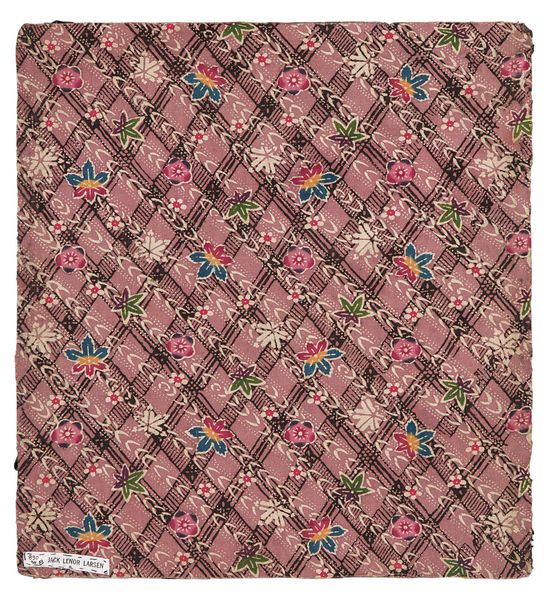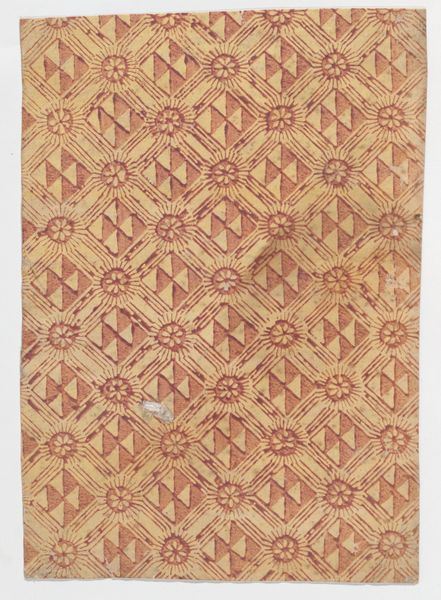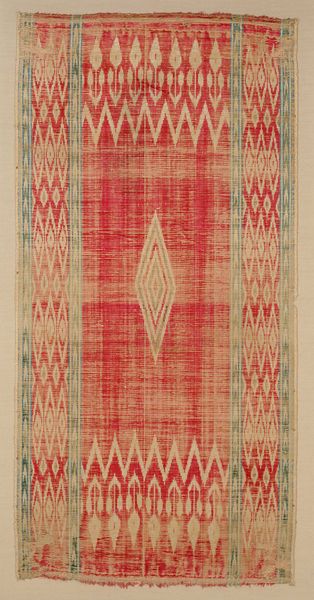
weaving
#
weaving
#
geometric
#
indigenous-americas
Dimensions: 51.8 × 32.7 cm (20 3/8 × 12 7/8 in.)
Copyright: Public Domain
This panel fragment was woven by the Nazca people of ancient Peru, using fibers from camelids like alpacas and llamas. Look closely, and you’ll see how the geometric motifs are rendered in a variety of vibrant colors – reds, yellows, greens, and browns. The process of creating these textiles was deeply significant. The camelid fibers were carefully spun into threads, dyed using natural pigments, and then interlaced on a loom. This labor-intensive process would have required considerable skill and time. Notice the stepped fretwork, almost like a maze of interlocking shapes, achieved through the precise manipulation of the weft and warp. Textiles like this weren't simply decorative; they held symbolic meaning and played a crucial role in social and religious life. The sheer amount of work involved elevates the textile beyond mere craft to something of great cultural significance. By examining how the panel was made, and the materials used, we can appreciate the artistry and values of the Nazca people, challenging the traditional divide between art and craft.
Comments
No comments
Be the first to comment and join the conversation on the ultimate creative platform.
